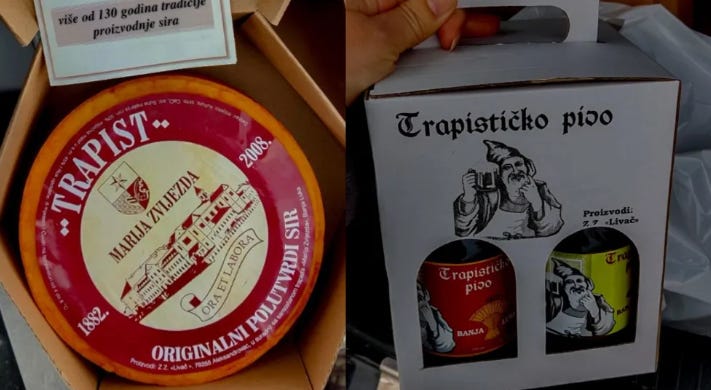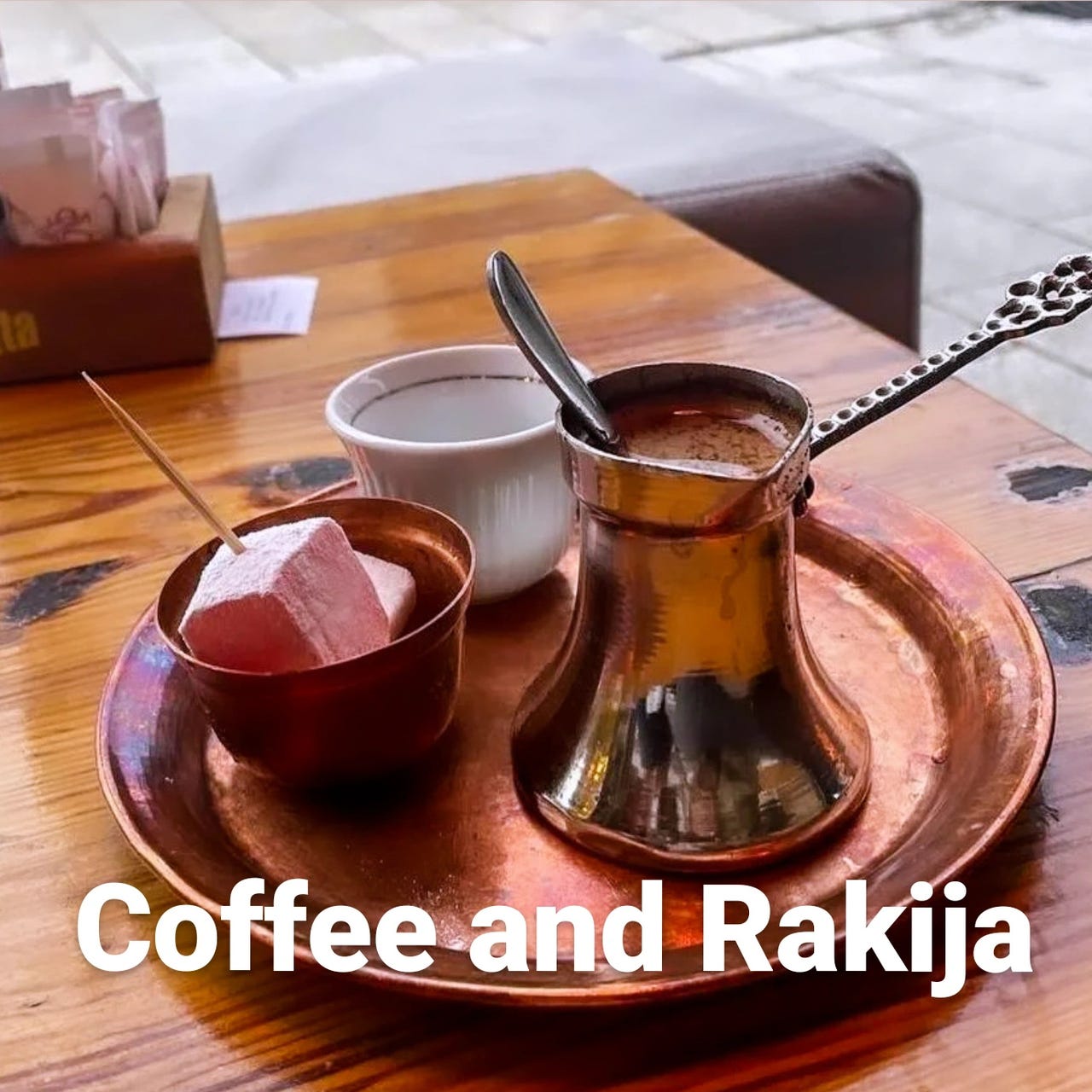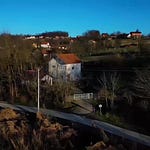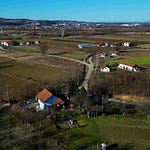⬆️ Please use the Closed Caption for this video (above) as it’s a bi-lingual video ⬆️

In this post we're going to find out a little bit about beer and cheese from Banja Luka. Most people aren't familiar with these two things.
They might be familiar with the Dajak. They might be familiar with the big Mosque here, and they might be familiar with the earthquake of 1969.
But they're definitely not, too aware of the beer and cheese story.
If you can’t subscribe to Coffee and Rakija, for whatever reason, and really would like access to all my content, please drop me a message.
The History of the Trappists of Banja Luka
The arrival of the Trappists in Banja Luka, was over 152 years ago.
When they came they started a revolution not only in the production of cheese and beer which has persisted today, but also in other things like in culture, education and certain architectural endeavours that they worked in.
This was of great significance for the area.
Franz Pfannerr the founding father was an extraordinary person. His original decision was not to go to Banja Luka. His first idea was to establish a monastery in Croatia, but he was denied. Then he came up with the idea to establish an orphanage for children.
Through communication with a priest from Banja Luka he learned about the very difficult life there and about the abandoned children who did not go to school, so he decided to come to Banja Luka and start building a monastery.
At that time Banja Luka was part of the Turkish Ottoman Empire, so Franz Pfanner came from Austria to Turkey. He first bought a property near Banja Luka from a Muslim, but when he realised that Franz was a Catholic, he refused to sell it to him, and then Franz came to Delibašino selo and bought this property from a merchant, Tomo Radulović.
The property on where the Monastery stands today was at that time only an old wooden hut which the Trappists called the cradle, from which the whole story begins.
A Small History of the Trappist Cheese Museum near Aleksandrovac
They first began to build a convent and a convent church. After that, certain changes took place as Bosnia and Herzegovina became part of Austro-Hungary.
Many monks and brothers came from Western Europe and the German-speaking areas, the inhabitants of these places were slowly settling in Rudolfstahl, where the cheese is made, today's Aleksandrovac, and also Windhorst which is today's Nova Topola.
Next to them comes a group of Poles from Poland and there is still that community in Čelinac where there is a church and also there are Italians from the Trieste region, who settle in todays Laktasi, who continue with, and start wine production in this area.
Other nationalities such as Ukrainians and Croatians also came here.If you come to the museum you can see that there were 24 different nationalities of monks from Europe in the monastery, but most of them were from the German-speaking area.
And Finally
Don’t forget that you can read back editions of the newsletter, listen to previous podcasts (we have quite an archive now), or catch other content, all this is available on the web interface, just like a regular blog.
Oh, and please share the newsletter with friends, relatives and colleagues using the button below.
Tamara and I appreciate your faithful readership, your comments, and your generosity!
Until our next post.
THANKS SO MUCH ❤️






















The Story of Trappist Cheese and Beer in Banja Luka